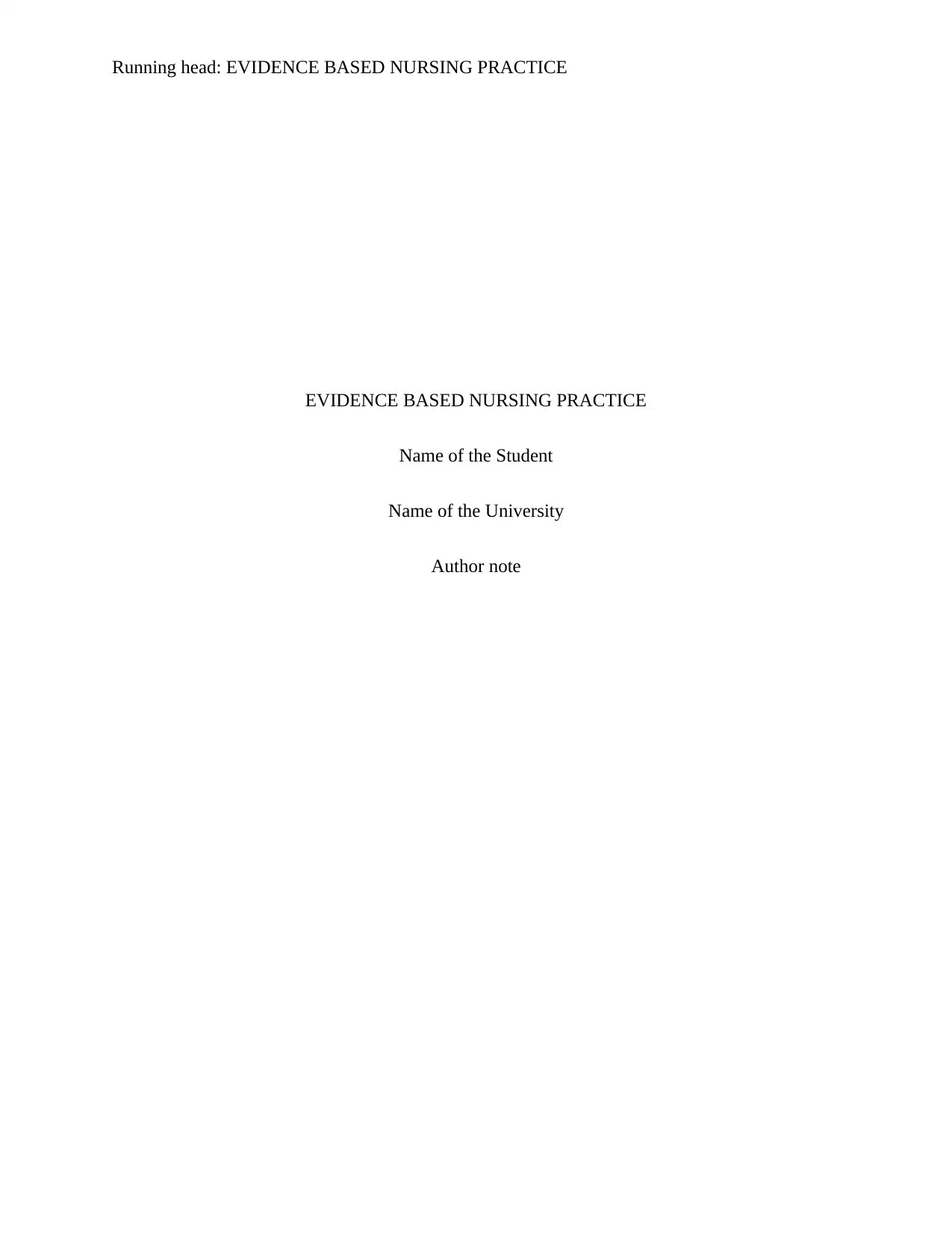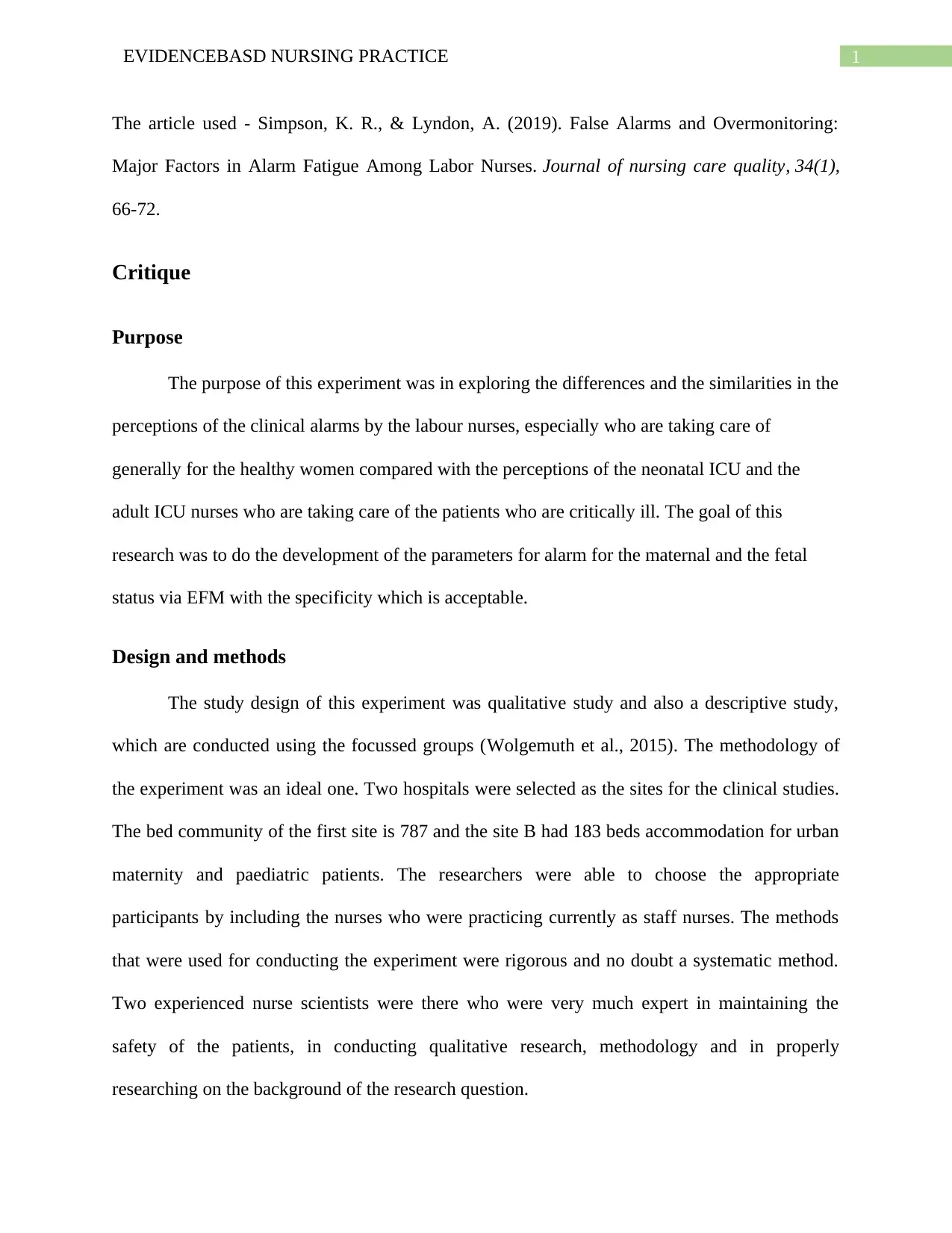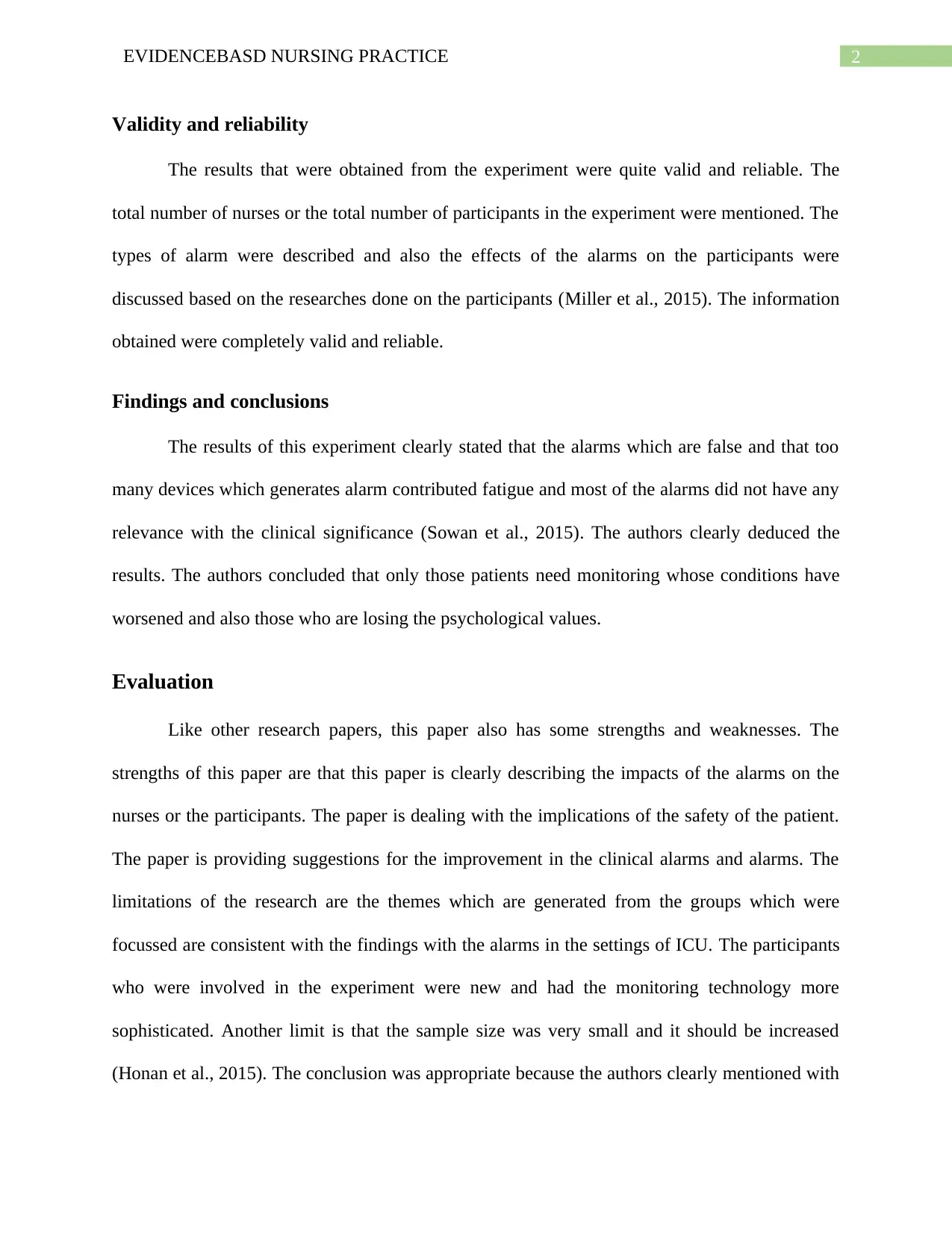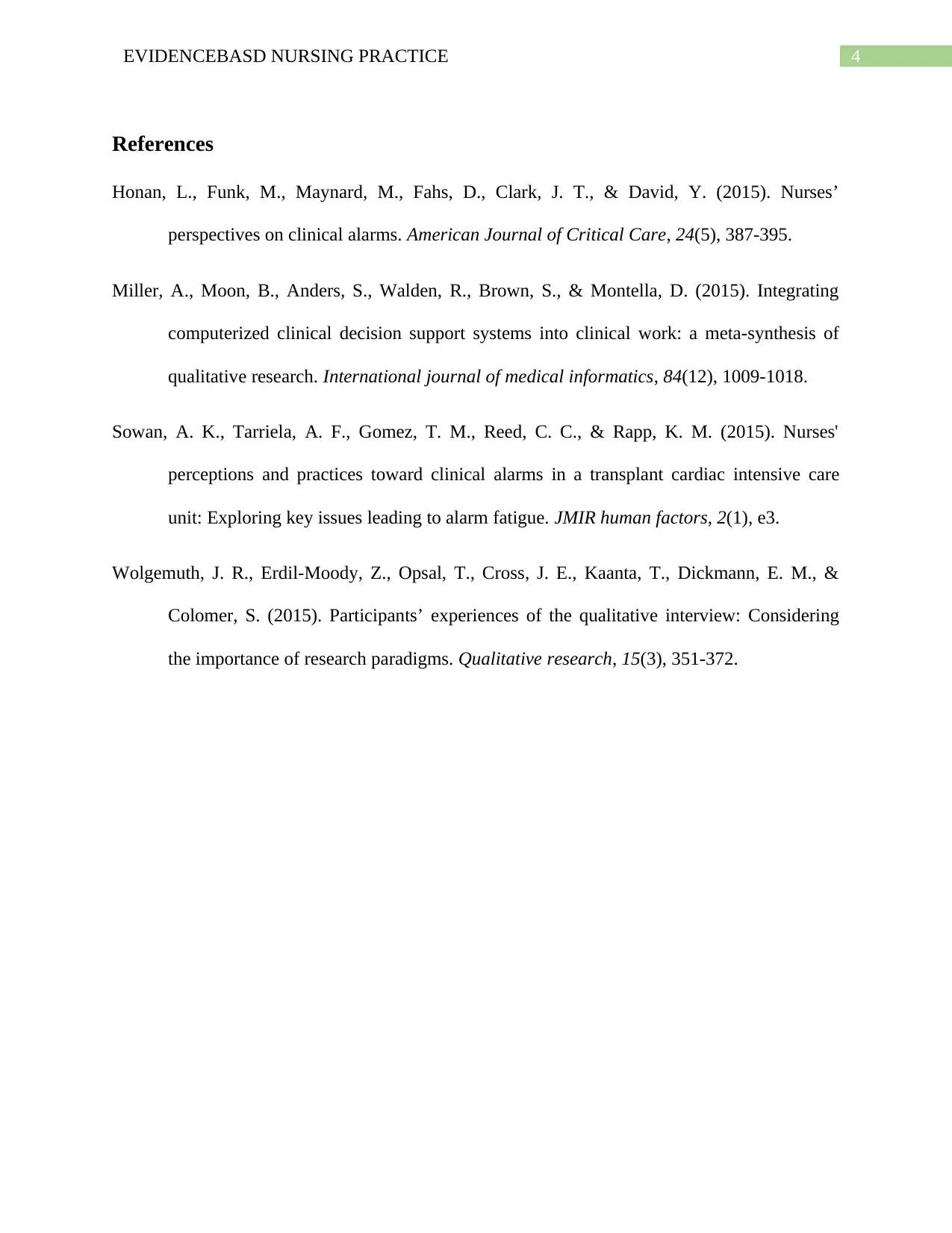NUR 440: Critique of Evidence-Based Nursing Practice Research Article
VerifiedAdded on 2022/12/27
|5
|892
|39
Report
AI Summary
This report is a critique of a research article titled "False Alarms and Overmonitoring: Major Factors in Alarm Fatigue Among Labor Nurses." The critique analyzes the study's purpose, which was to explore perceptions of clinical alarms among labor nurses compared to ICU nurses. The study used a qualitative, descriptive design with focus groups. The critique evaluates the validity, reliability, findings, and conclusions of the research, highlighting strengths such as the clear description of alarm impacts and patient safety implications, as well as limitations like the small sample size and focus on ICU settings. The findings indicated that false alarms and excessive devices contributed to alarm fatigue, with many alarms lacking clinical relevance. The author's conclusion suggested monitoring only patients whose conditions warrant it. The critique also provides suggestions for future research, such as increasing the sample size.
1 out of 5












![[object Object]](/_next/static/media/star-bottom.7253800d.svg)